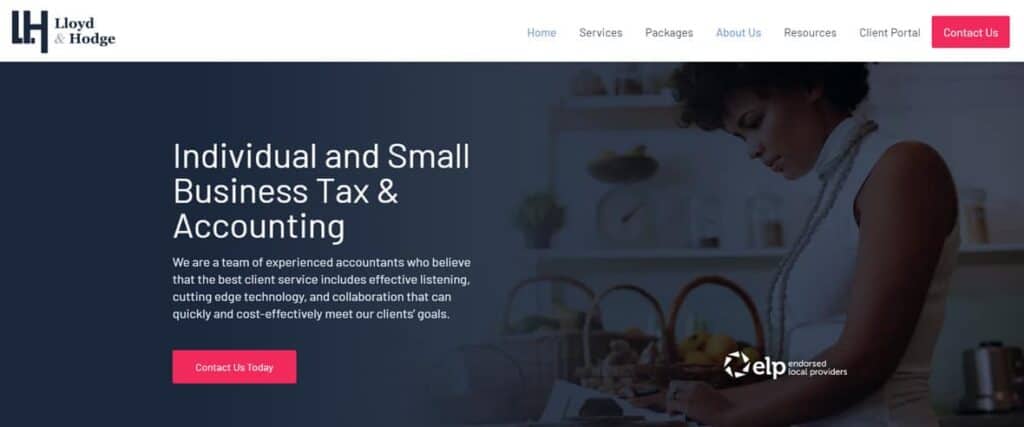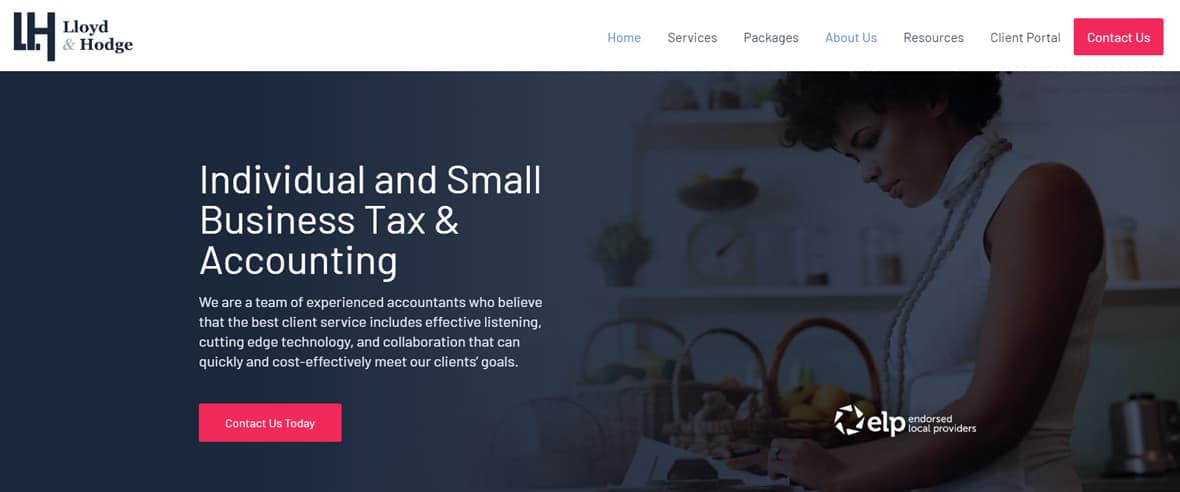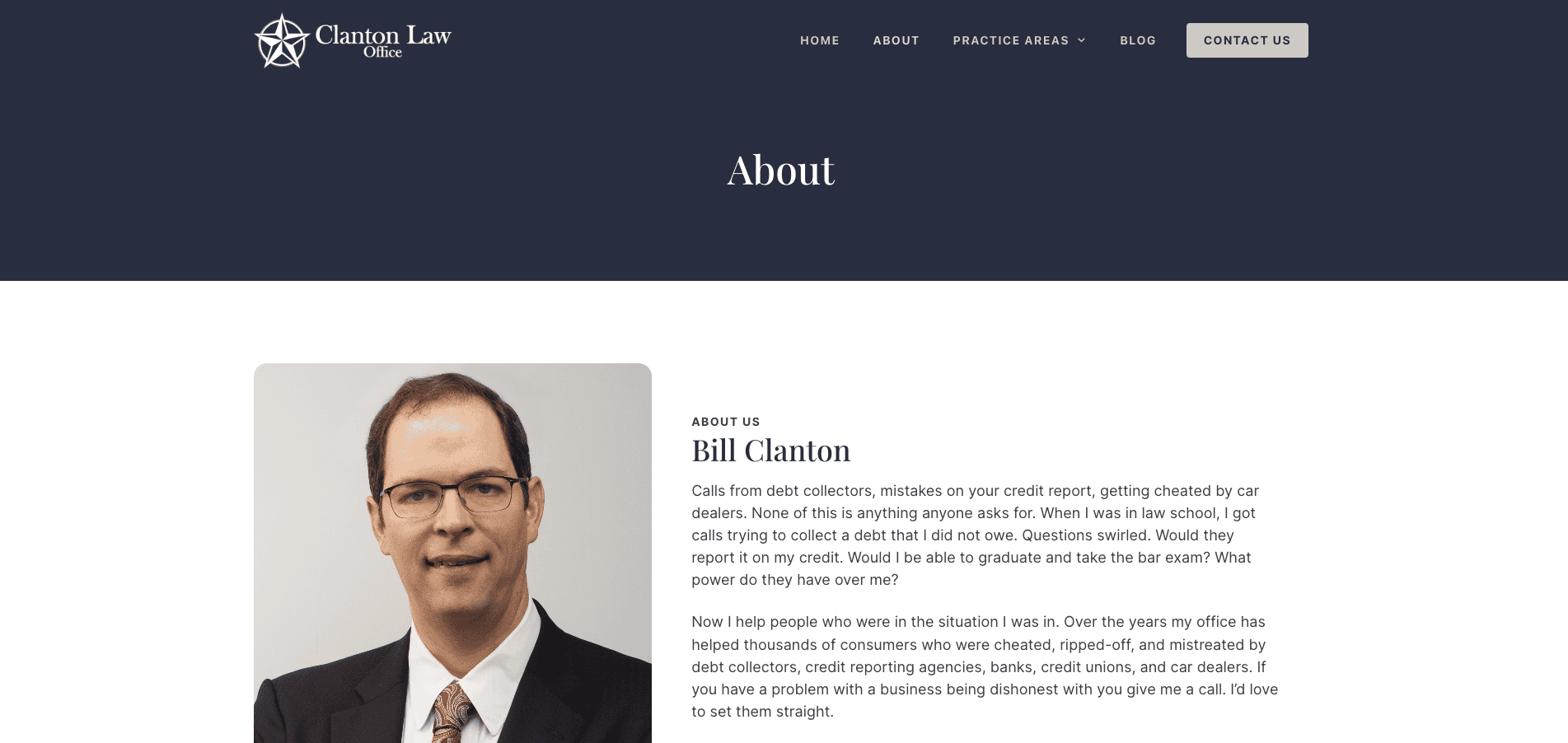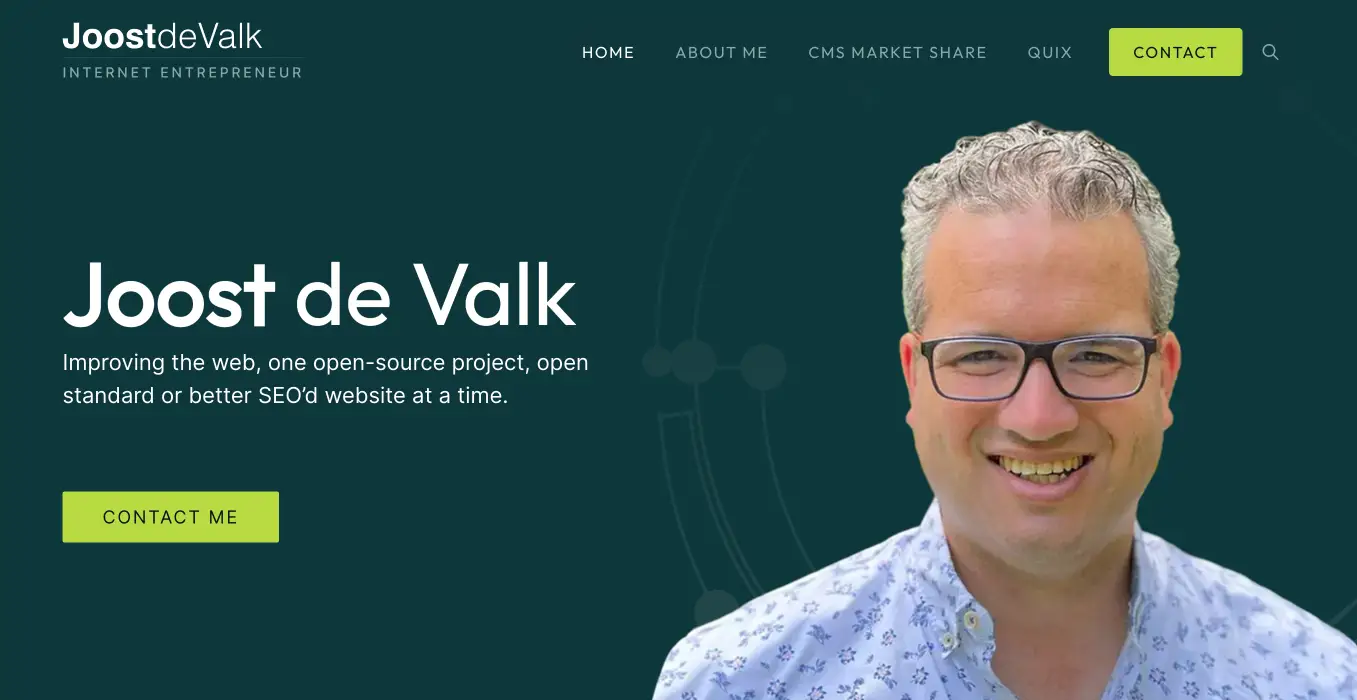In this article I’m going to walk you through the website I built for Lloyd & Hodge, a small accounting firm in North Texas and how, within a year, their website has helped take them from an unknown startup in a crowded industry, to opening 2 new locations and seeing tremendous growth within their business.
“Kyle spent so much time perfecting our website. We get so many compliments on our website and I really appreciate your attention to detail and the time he spends on getting every last thing right. Very responsive and great to work with!”
Owner, Lloyd & Hodge
The Backstory
Let me start by giving you a little bit of the backstory…
Laura Lloyd, one of the co-owners of Lloyd & Hodge, was introduced to me through a mutual acquaintance. She had recently decided to partner with Whitney Hodge to form a bigger agency with the capacity to serve more clients.
Laura had a website, but it was geared towards her personal business, which didn’t include Whitney, and wasn’t built to attract the type of clientele they were looking to work with.

Lloyd & Hodge wanted to market directly to startups, freelancers, and young professionals — and even pre-pandemic wanted to highlight their remote services, which, at the time, wasn’t typical in their industry.
The goal of the new website was to design something that would be attractive to their target audience, bring in new leads, help build awareness of their offerings, and with their expertise, educate young companies on the importance of their financial health.
Finding the Right Look & Feel
The financial industry is typically a bit “stuffy” — and there’s a reason for that. Taxes, accounting, and bookkeeping are all serious matters when it comes to your business, and instilling trust and expertise is extremely important.
We knew the website would have to be more on the “corporate” side, but that aesthetic can sometimes clash when you’re trying to attract a younger demographic who are drawn to something a little more exciting.
To help solve this challenge, I used a mix of both traditional and more modern elements in their design…

The layout is more on the corporate or traditional side, which makes things easy to find as you navigate the site. The most prominent color on the website is a deep blue, which is the color of trust and intelligence.
But in order to make it more fresh and vibrant, I countered that with bright pink calls to action, a modern sans-serif typeface, and curated photography that features young business professionals.
The blending of these two elements allows the website to remain strong & professional, which anyone seeking tax and accounting advice will want to see, while the modern touches help appeal to the younger demographic they are looking to attract.
Getting The Website Found Online
One of the hardest parts about starting a new company, as Laura and Whitney were doing, is simply getting your website found online — especially in a crowded industry. Most of their competitors have been in business for decades, and search engines (like Google) give favor to companies and websites that have been around for years over brand new ones.
In order to drive traffic to the website, SEO (or search engine optimization) was going to have to be a focus — not only ensuring the website was fundamentally sound, but as part of an ongoing strategy that would prove to the search engines that the Lloyd & Hodge site was a great resource, they should be recommending people to in search results.
All SEO starts with the structure of the website, making sure that the markup of pages is done properly so that Google and other search engines can understand and index the content. This part of their SEO was done during both the planning and initial development of the website.
But to ensure we got things off the ground as quickly as possible, we implemented a few more SEO strategies to increase their chances of ranking.
The Blog
Over a 5 month period, I developed 15 articles for their website, covering topics like:
- Cloud accounting
- Outsourcing payroll
- Bookkeeping mistakes
- Budgeting for a side-hustle
- And the need for a personal accountant
Though these articles had a dual purpose — their number one priority is focused on search engine optimization.
Each article idea came from search analysis that took into account both what people are searching for, and topics have the least amount of competition. By combining these two metrics, we can use the lower-level of competition to ensure we rank quickly with enough search volume that the articles would answer questions that people who fit Lloyd & Hodges ideal customer profile would be looking for answers to.
But these articles serve a dual purpose. Beyond the SEO strategy, these articles demonstrate Laura & Whitney’s knowledge. Visitors who have questions about these topics are able to find an expert that explains the answer in a non-technical way. This helps Lloyd & Hodge build trust and authority with their potential customers while they sleep — or at least without having to take time away from their work to develop these relationships.
Peeking at their Google Analytics, which measures the traffic on their website, these articles bring about 25% of their traffic to their website — traffic that would have never found them had these articles not been published.
Location, Location, Location
The second big component to their SEO was their local SEO. Over the first year in business, Lloyd & Hodge acquired two other existing firms, and are now operating in three different cities across North Texas.
Though they are able to provide their services remotely, and proximity is not necessarily an issue, the data shows us that people looking for accounting services are still including phrases like “near me” or including the name of their town or region.
To ensure they show up in local search as well, I developed landing pages for each of their locations, all with the proper markup to tell search engines where each of their branches are located.
Now if you search for phrases we’ve identified as key for them along with any of the towns they operate in, you can find their website in the search results, which has been a major boost to their traffic.
Understanding SEO
Before we move past the SEO strategy, I wanted to share this graphic with you.

This chart has been pulled from the Lloyd & Hodge website showing the traffic to their website over time — and I think it does a great job of explaining some of the misunderstanding about SEO.
We launched this website back in December of 2019, and started their SEO campaign (writing articles and local SEO) in May of 2020. And while you can see a minor uptick in traffic that builds slowly, around November or December the chart just takes off — showing an explosion in traffic to their website.
This is a direct result from the SEO work done over the 5 month period between May and November.
Results from SEO aren’t something you see overnight — it’s more like planting a garden.
You start by tilling and preparing the soil, ensuring that it’s an environment that will sustain the plant’s growth. Then you carefully water your seeds, make sure they are getting enough sun, and keep the bugs away — which takes time, attention, and patience.
It may not look like anything is happening at first, but suddenly the seed sprouts, and eventually you’re rewarded with beautiful plants providing you with a bountiful harvest.
SEO is a lot like that.
Putting the fundamentals in place was our way to prepare the soil for planting. Building the location page and writing articles was watering the site and encouraging growth. And eventually, because we did all the right things, we were rewarded with enormous organic traffic to the website — which continues to provide new leads and customers all off the back of the work we put in to facilitate that growth.
Demonstrating Expertise, Authority, & Trust
There are a couple of other things I’d like to point out that have helped lead to the success of this website.
The first is an acronym called EAT, which stands for expertise, authority, and trust.
These three elements play a huge role in both the user’s experience and overall impression of your business when visiting your website, but it’s also something that Google is measuring through its algorithm.
In order to convey expertise, authority, and trust, you have to send signals to both users and search engines.
One way I was able to do this was through a simple, and repeated message on their website — their partnership with Dave Ramsey, a well-known financial expert.
Lloyd and Hodge are part of the ‘Endorsed Local Provider’ program through Ramsey solutions. This is an exclusive membership that shows they’ve been vetted, and are held to a higher standard.

Incorporating information about that program, along with a photo of Dave and his accompanying logos provides instant expertise, authority, and trust. Any visitor familiar with Dave Ramsay’s teachings (and there are a lot of them!) will recognize Dave’s photo, and recognize that Laura & Whitney are professionals they can trust.
And it’s had SEO benefits too — as you can now find their website ranking for searches related to Dave Ramsey because Google also recognizes the EAT that comes along with this distinction.
Generating Leads & Nurturing Them into Clients
The last thing I’ll point out is the lead generation system I developed and implemented that helps collect visitors email addresses, and nurture them through an email marketing campaign that ultimately leads to setting up a meeting with the prospect.
The great thing about this from Laura & Whitney’s perspective is that this system works 24/7/365 — even while they are sleeping — to capture visitors’ information and start to develop a relationship with them.
I did this by designing and developing a free download (in the form of a PDF) that visitors to the website can receive by entering their email address.

The guide, called “6 Secrets for Startup Success” helps new businesses understand some key fundamentals that relate to the services Lloyd & Hodge offers, including:
- Separating your personal and business finances
- Understanding the value of your time
- How to establish financial goals
- Tips for limiting your fixed expenses
- Documenting your processes
- And signs it’s time to hire a professional
This guide, which gets downloaded regularly by visitors to the website not only helps people in Lloyd & Hodge’s target demographic (startups and small businesses), but demonstrates their expertise and eagerness to help their clients succeed.
After a user downloads the guide, they go through a sequence of emails that expands on these topics, providing even more value, and finishes by offering to setup a free consultation to go over and questions or offer any personal help or guidance.

Even if the people who download the guide don’t set up a call right away, since we’ve captured their name and email address, we can continue to send them valuable information (like filing deadlines, tips for saving on taxes, and more) over time, which helps further develop a relationship so that when the time comes, Laura & Whitney are the obvious choice to turn to.
Odds and Ends
It’s worth mentioning, that beyond their online & digital presence, I’ve worked with Laura and Whitney to build continuity throughout all their customer touchpoints both online and offline.
This included designing and developing their logo and branding, developing print marketing materials like tri-folds, business cards, and letterhead, as well as sales sheets for their various services.
Not every small business goes to the trouble and expense of ensuring a consistent experience no matter where their customers see them — but this kind of continuity builds trust in a brand. By giving customers a consistent experience, they are more likely to recognize and remember you — which is what branding is all about.
Before You Go
As we wrap up this walkthrough, I hope that you can see, a website should be more than product descriptions and pretty pictures. In order to get a return on investment from your website, and have it become an asset for your business, you have to take many things into consideration, including:
- Your target audience
- Layout and design
- How to generate traffic
- Demonstrating expertise, authority, and trust
- And how to turn visitors into customers, like we did through their lead generation system
Every website is different, and this is why it’s important to start with your goals and objectives, and then plan, develop, and build a website that will help you meet those goals.
While technology has given us some pretty easy ways to get a website up and running, too many companies aren’t spending the time to develop something that addresses their specific challenges and provides a solution to help position them for success online.
I’d love to hear about your goals and help you develop a strategy and solution that helps you achieve them.
If you’re ready to get started, fill in my project inquiry form and we can set up a time to jump on a call and see how we can work together to improve your online presence.




